Old San Juan: The Streets Tell the Stories
Intro
San Juan is the capital city of Puerto Rico, a Caribbean island that was initially inhabited by the Taíno people, taken by Spanish colonists in 1521, and then acquired from the Spanish by the United States in 1898 after the Spanish-American War.
San Juan is like many Spanish colonial cities throughout the Americas: There is one neighborhood called the Old City, where you can see lots of structures that are representative of typical Spanish colonial architecture located inside city walls and exterior fortresses, and then a number of other neighborhoods that are more representative of what the city/country actually looks like today.
This post only features Old San Juan (plus a small neighborhood next to it called La Perla).

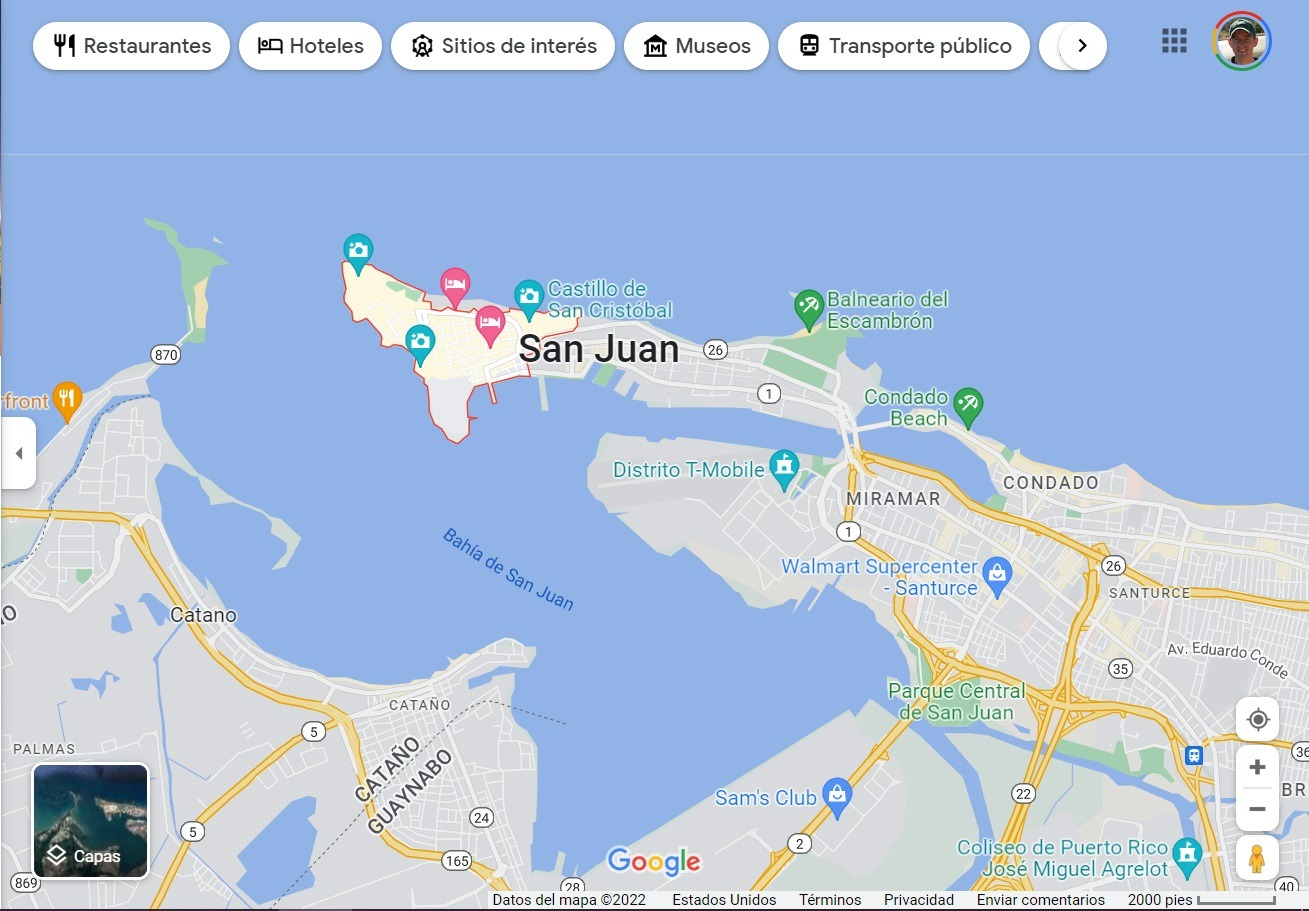
Colonial City Trademarks
Walking around Old San Juan, the first things that you will notice are the typical features of Spanish colonial cities and their architecture:
a) Vibrant structural colors: Pictures 1-4 below show this, which for me, is really aesthetically pleasing.
b) Plazas: Picture 5 shows the Plaza de San José. Most Spanish cities either were built around plazas or have a lot of them. A plaza is like a gathering place, an opportunity to socialize. This feature shows the emphasis that the Spanish place on community and socialization. I love this aspect of Spanish culture.
c) Monuments to honor Spanish explorers/conquistadores: Also shown in picture 5, in the Plaza de San José, is the Juan Ponce de León Monument. Juan Ponce de León was a Spanish explorer who was the first Governor of Puerto Rico. He first came to the Americas on Christopher Columbus's second expedition in 1493. He later led the first European expedition to Florida in 1513.
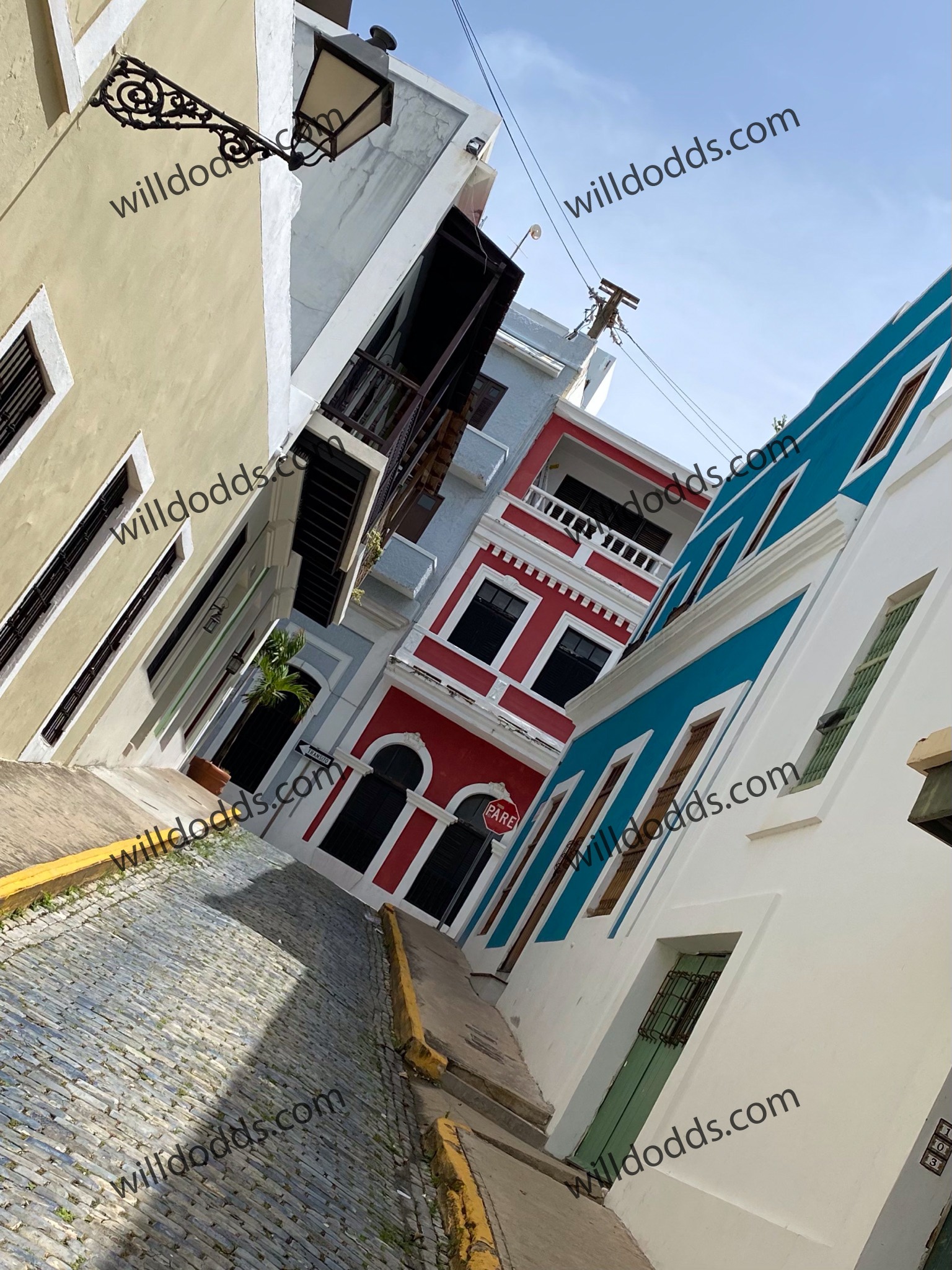
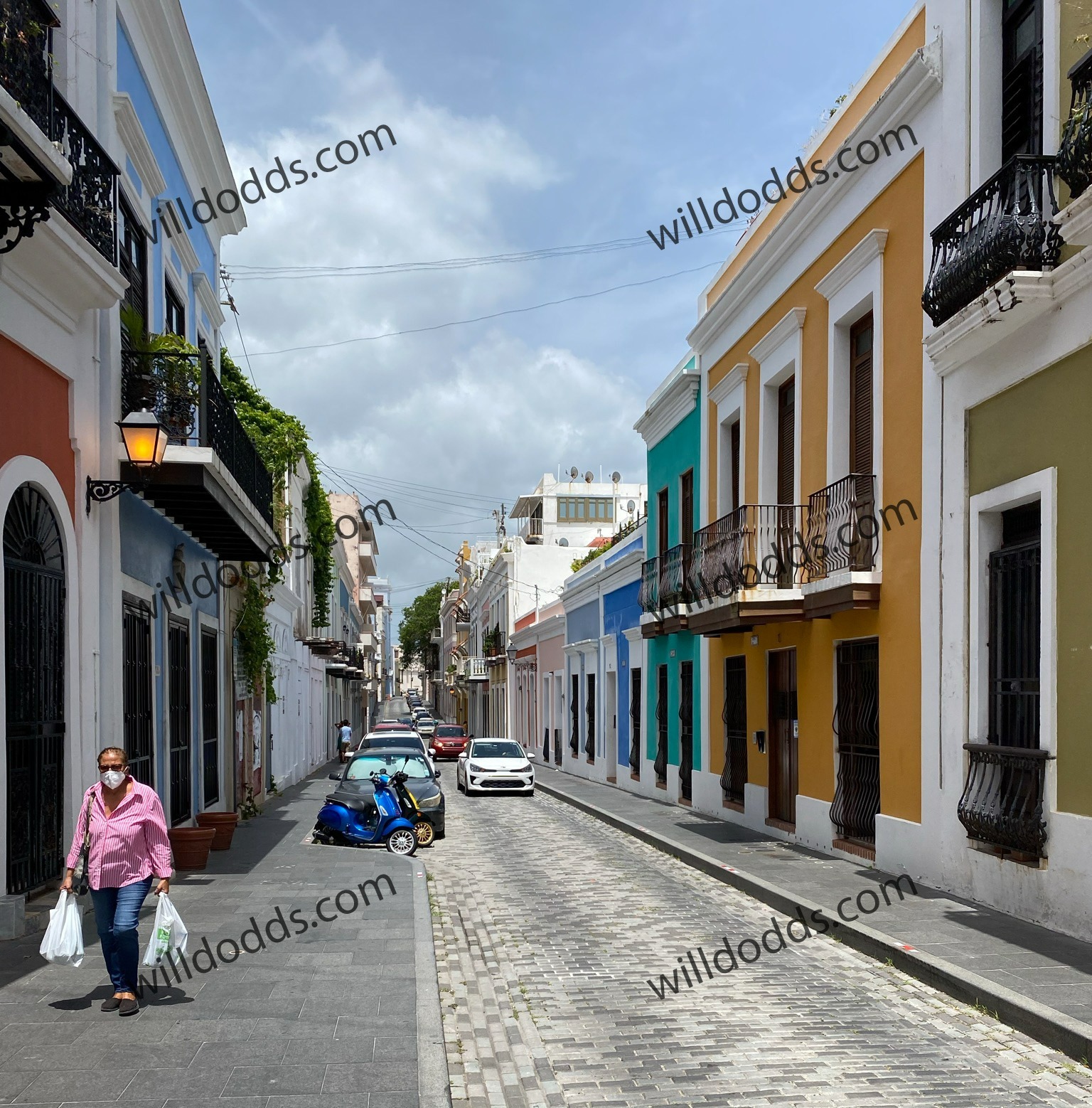
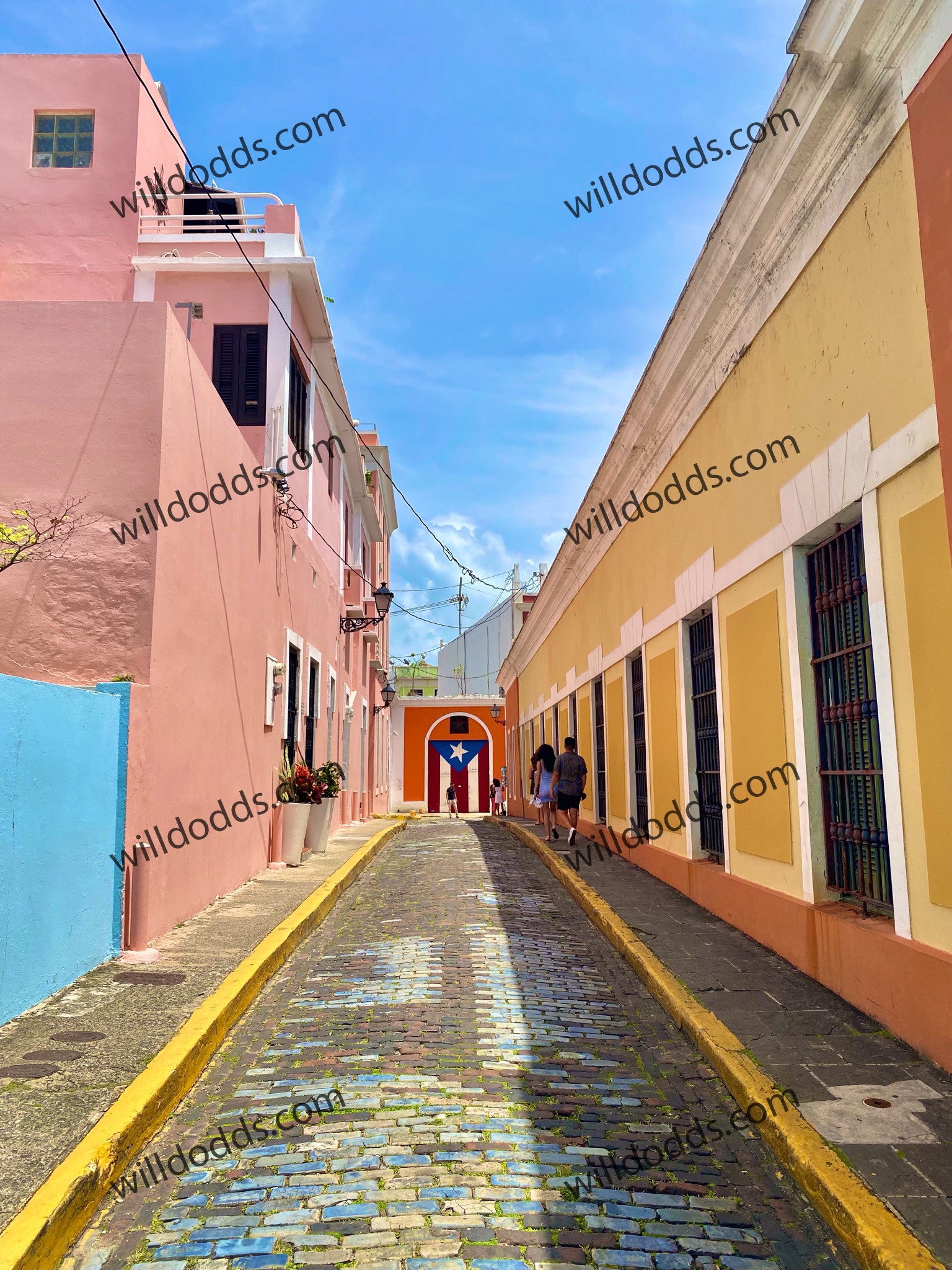
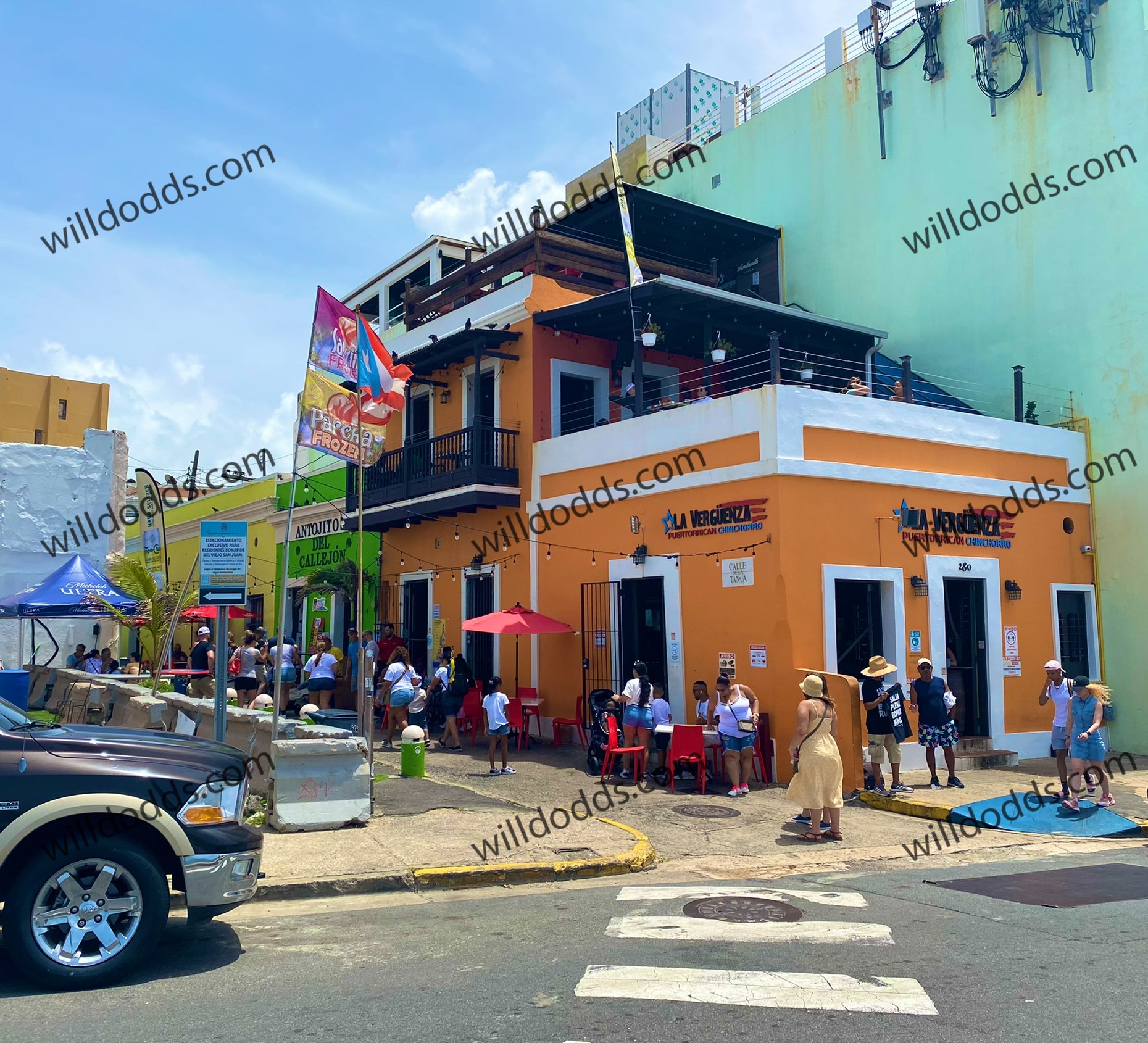
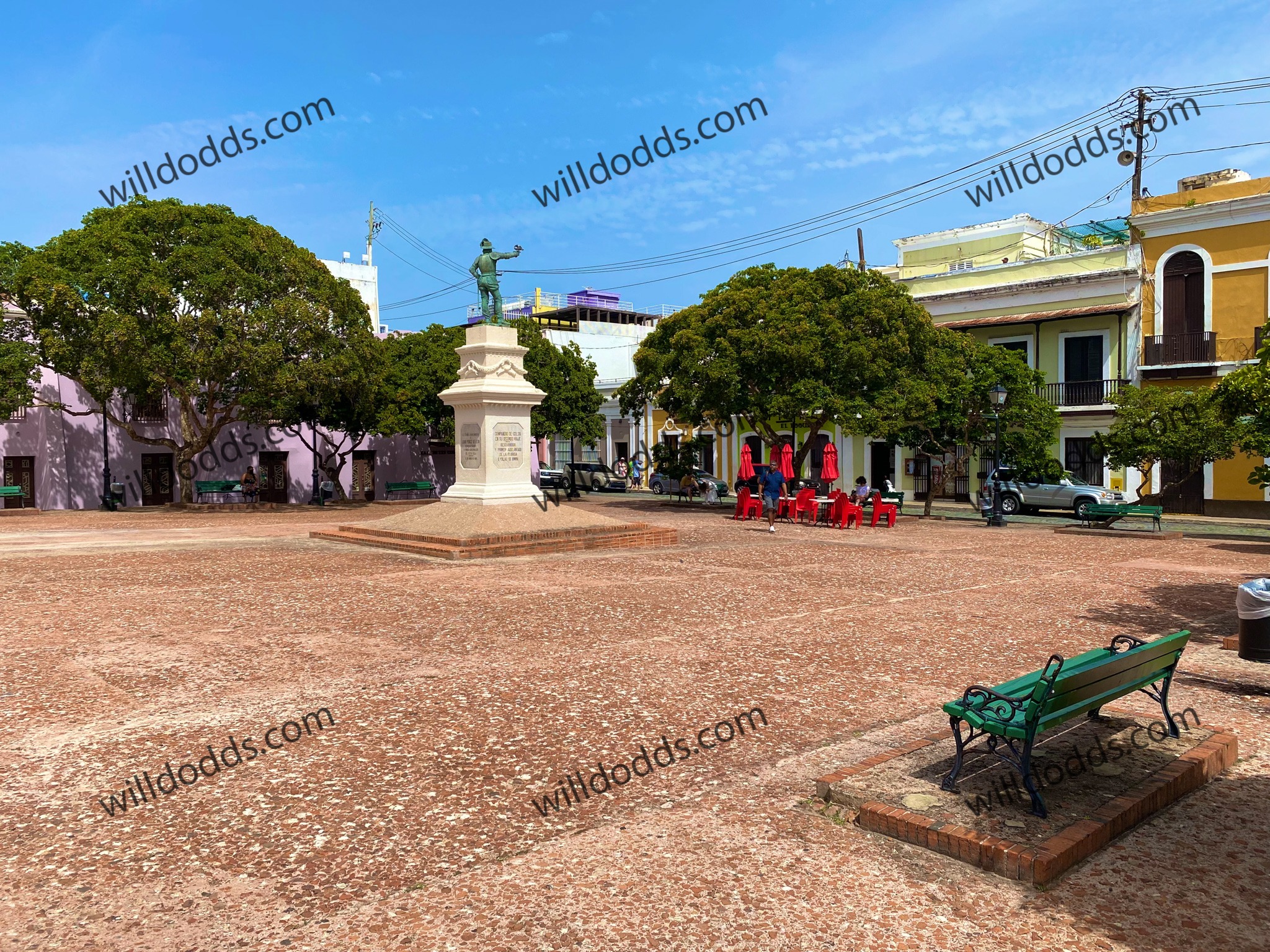
Responses to Hurricane Maria
We came across a wall of paintings of responses to Hurricane Maria, which destroyed much of Puerto Rico in 2017. The controversy, though, lied in the United States government's response, or lack thereof. For months after the hurricane, enormous portions of the island had limited access to drinking water, electricity, cell phone service, and fuel. In fact, the "blackout" was the worst/longest in United States history.
The first half of this podcast episode tells the story of the bureaucracy and red tape that delayed Puerto Rico's ability to access funds from FEMA to start to restore the island after Hurricane Maria: https://www.wnycstudios.org/po...
Puerto Ricans' feelings of neglect were probably exacerbated when Then-President Trump visited the island after the hurricane and threw paper towels at Puerto Rican reporters during his press conference with them.
The first painting simply says, "the town/people have strength/fortitude"--Obviously, motivational words.
The second one is a bit more interesting. It says, "A rose for 4,645 deaths." The lack of resources on the island and the U.S. government's lack of response to the hurricane meant that many victims received no relief and deaths went uncounted. The Harvard School of Public Health estimated that 4,645 people died from Hurricane Maria, but this was a very rough estimate. The article linked below explains that the best Harvard could do was come up with a range--Between 793 and 8,498 people died, they said. The number 4,645 is just the median number of this range.
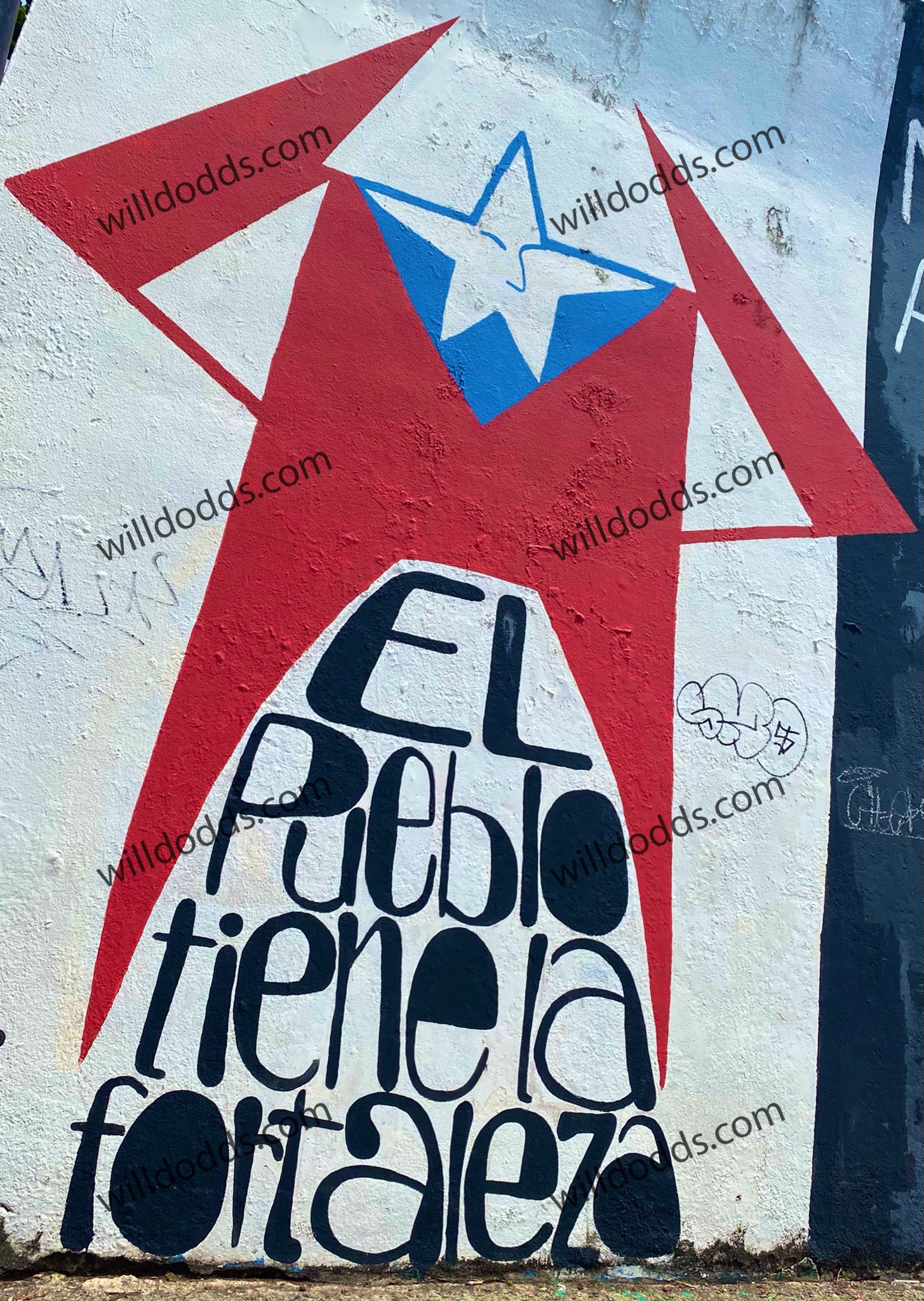
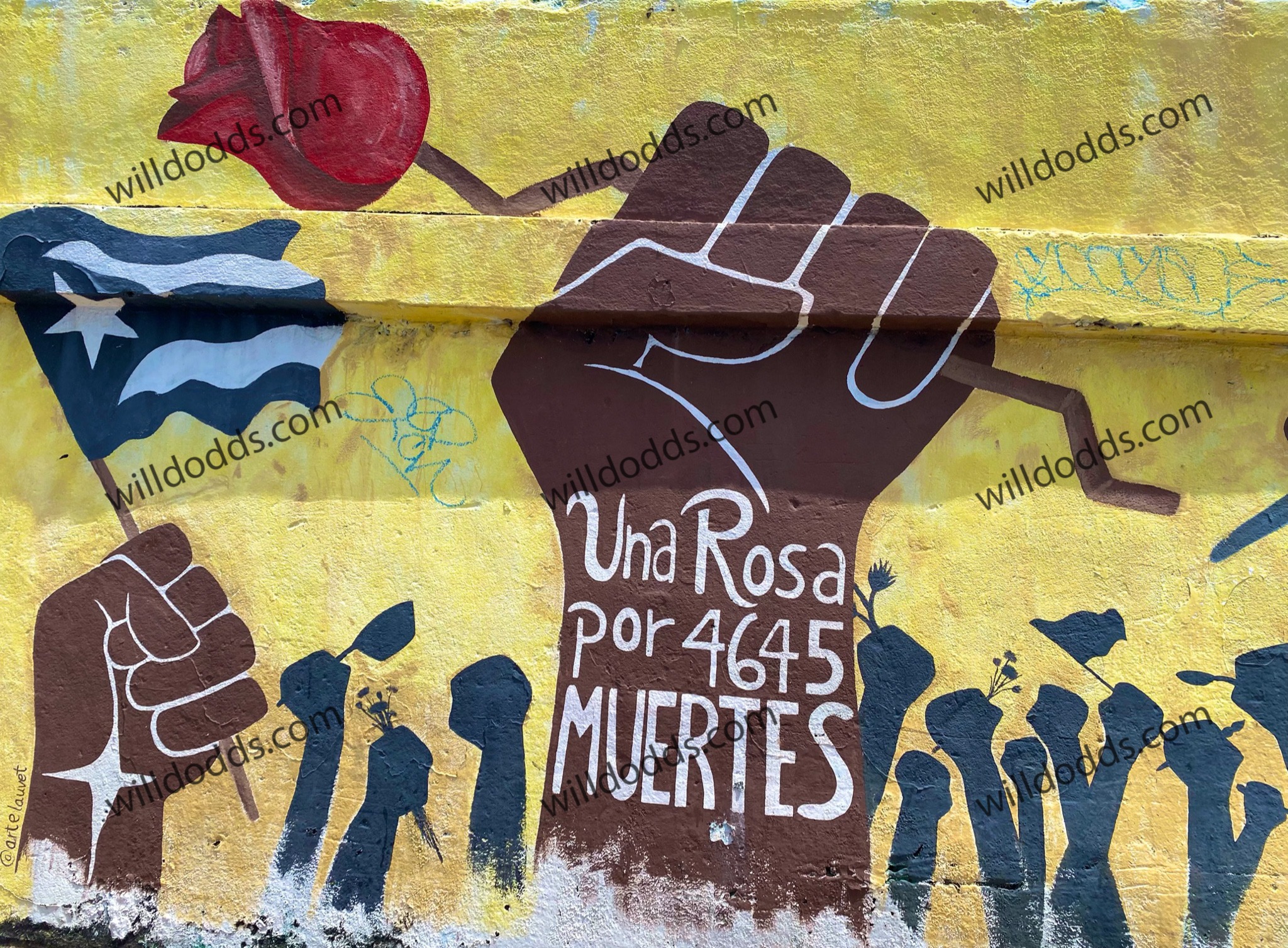
Anti-Lockdown Sentiment
We visited Puerto Rico in July 2021, not too much more than a year after Covid hit the Americas. It had been long enough that, after having been vaccinated, we felt okay to travel, but many restrictions, such as masks and indoor social distancing, were still in place.
Living through the pandemic in the United States, where resistance to government mandated restrictions and lockdowns was high, while watching through the lens of the news other developed countries seemingly demonstrate relatively strong social cohesion, I felt like the United States had an especially bad reaction to the changes that the pandemic brought, but actually there were pockets of resistance all over the world, including Puerto Rico.
In January 2021, Pedro Perluisi took office as governor of Puerto Rico. He passed an executive order that banned children under the age of 12 from attending public gatherings in hopes that the measure would reduce the amount of mass public gatherings on the island. Some Puerto Ricans reacted negatively to this move, as you can see in the posters below, which brand Perluisi with a Nazi symbol, say that "they are robbing us," and ask readers, "What are we going to do?"
The article below is an opinion piece from a Puerto Rican newspaper slamming Perluisi for his executive order:
https://islanewspr.com/2021/09...
My feeling has always been that most Puerto Ricans resent being a territory of the United States. It makes sense, right? Their language, culture, and history much more align with Spain and the other Spanish-speaking countries of the Americas. Furthermore, the United States has a history of mistreating them--Using and destroying some of the most beautiful parts of their lands for military bases and activity, refusing them statehood and the right to vote in U.S. elections, neglecting them after Hurricane Maria, etc.
However, this is not absolutely true. In fact, it seems that a lot of Puerto Ricans seem to have a pretty pragmatic attitude towards their status as a United States territory, owning and preserving their culture, while adopting some of the "good things" that they can from the U.S. This article shows that. The author criticizes Governor Perluisi for "neglecting the individual rights that the United States Constitution grants every resident U.S. citizen in Puerto Rico."
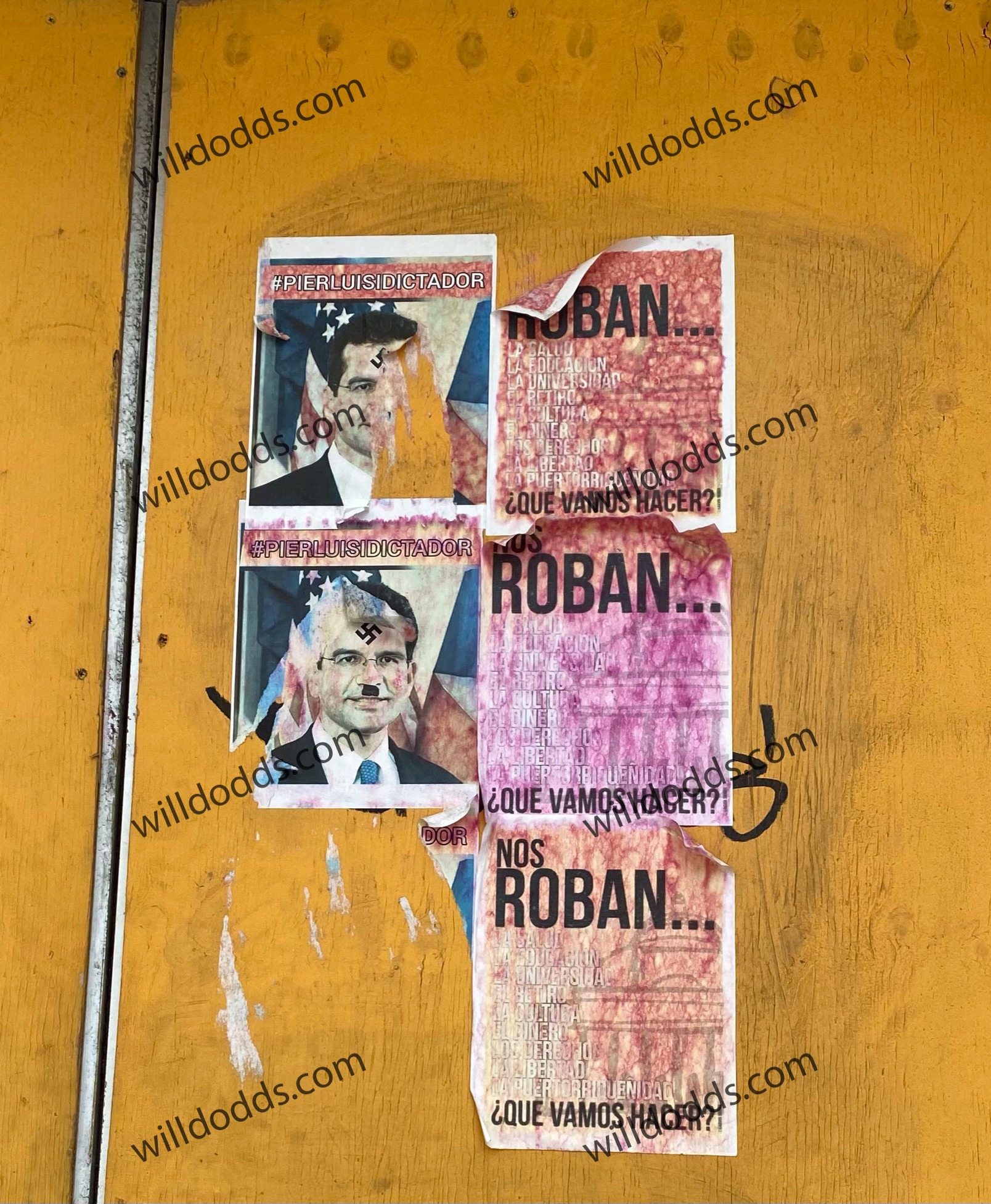
Anti-LUMA Protests and the Missing Vieques Hospital
We stumbled across a protest in the northwestern part of the San Juan islet. Maybe "protest" is too strong of a word. Maybe "demonstration" would be more appropriate. They weren't rioting, but they still had occupied an entire intersection, had signs, and were playing music.
(The music is Calle 13, an alternative hip-hop group from Puerto Rico, one of the most famous musical groups to come from the island.)
The protest was an anti-LUMA demonstration. LUMA Energy is the power company responsible for providing Puerto Rico with power. It seems that there were demonstrations all around the island this week to protest the high cost of energy and to ask the corporation to leave the island.
This news article explains the situation well: https://www.noticel.com/ahora/...
If you look closely at the sign that one of the two women in the center of the video below is holding, you can see that another controversial issue was incorporated into this protest: The lack of hospital on the island Vieques, one of two smaller islands that belong to Puerto Rico of the main island's east coast.
Vieques, which has a population of 9,000 people, previously had a hospital, but it was completely destroyed by Hurricane Maria in 2017 and has never been rebuilt. When Vieques residents need medical care, they have to travel to the main island, which means relying on a ferry that, while inexpensive ($2 per ticket) and a 45-minute one-way ride, only comes and goes according to a limited schedule and has historically been unreliable. This issue was brought to light in 2020 when a 13-year-old Viequense girl who lived on the island died from flu-like symptoms while waiting for medical care for five hours at a "provisional hospital" during which time family members and staff took turns manually pumping a hand-operated respirator that the girl needed to breathe (because the provisional hospital did not have a mechanical respirator).
You can read Jaidelez Ventura's story here: https://www.nbcnews.com/news/l...
The second half of the podcast episode that I mentioned earlier fascinatingly tells the story of the bureaucracy and red tape that delayed Puerto Rico's ability to access funds from FEMA to start to restore the island after Hurricane Maria, which resulted in the lack of a hospital on Vieques that could have potentially saved Jaidelez: https://www.wnycstudios.org/po...
La Perla
La Perla is a really interesting neighborhood. It is a tiny, less developed residential neighborhood located right on the water outside the colonial city. You can see it on the map in the picture below. It's the strip of land outlined in pink with a yellow arrow pointing to it.
Pretty much the entire chunk of land shown is Old San Juan, which, although it does have some really nice residential homes, seems to be more about tourism due to its abundance of museums, shops, restaurants, and monuments. Then, right there outside the walls of the Old City is La Perla. It seems so random and out of place.
But, La Perla exists for a reason. In 19th century Puerto Rico, living preferences were somewhat opposite of what people today would expect--Most people, especially those with money and status preferred to live in the city, away from the water. So, they created a neighborhood were they could send their slaves and the homeless population and where they could put their slaughterhouse. This was La Perla. By now, families have owned houses and lived here for generations and proudly claim their "independence" from the Old City and its touristy nature.
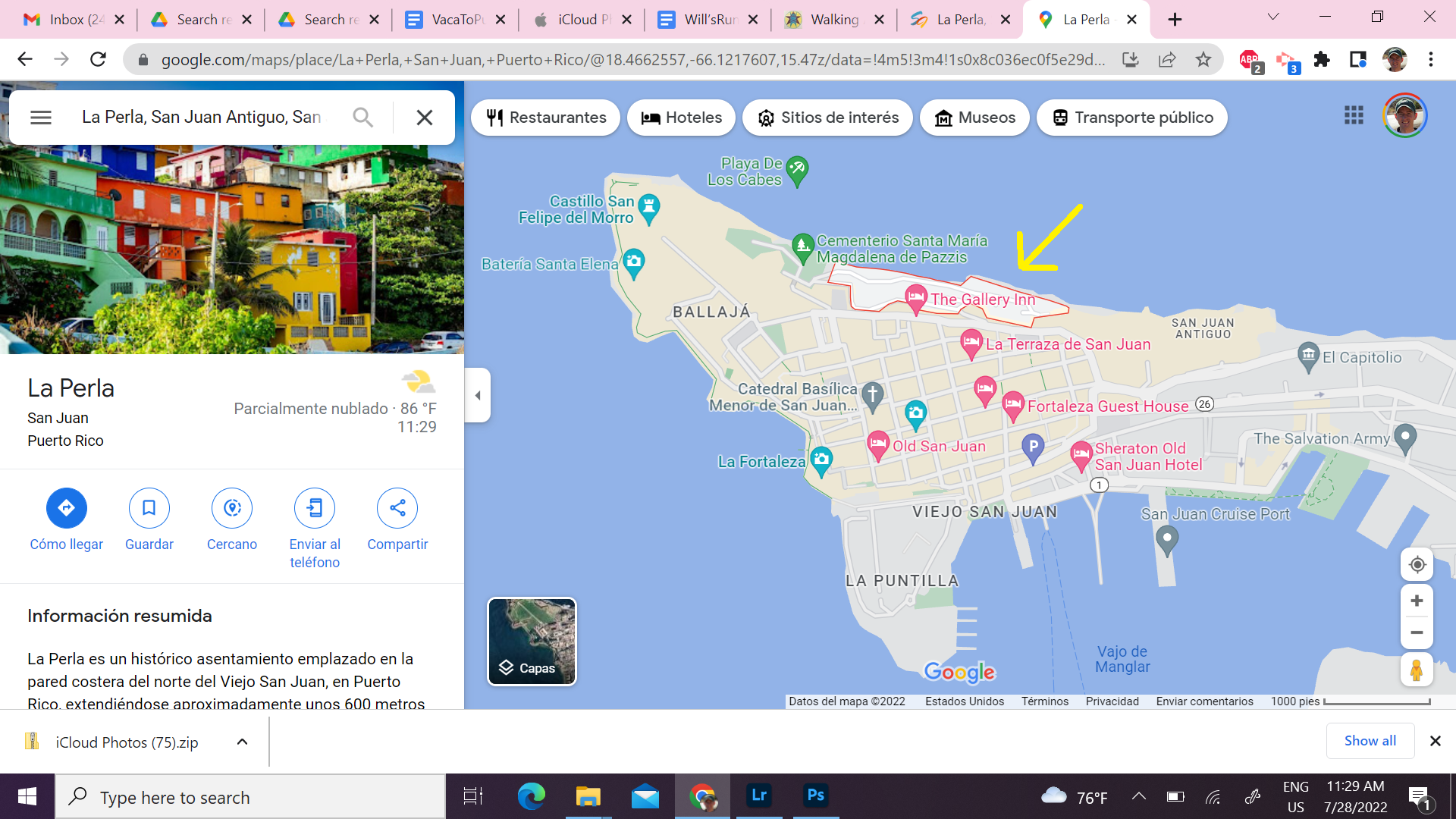
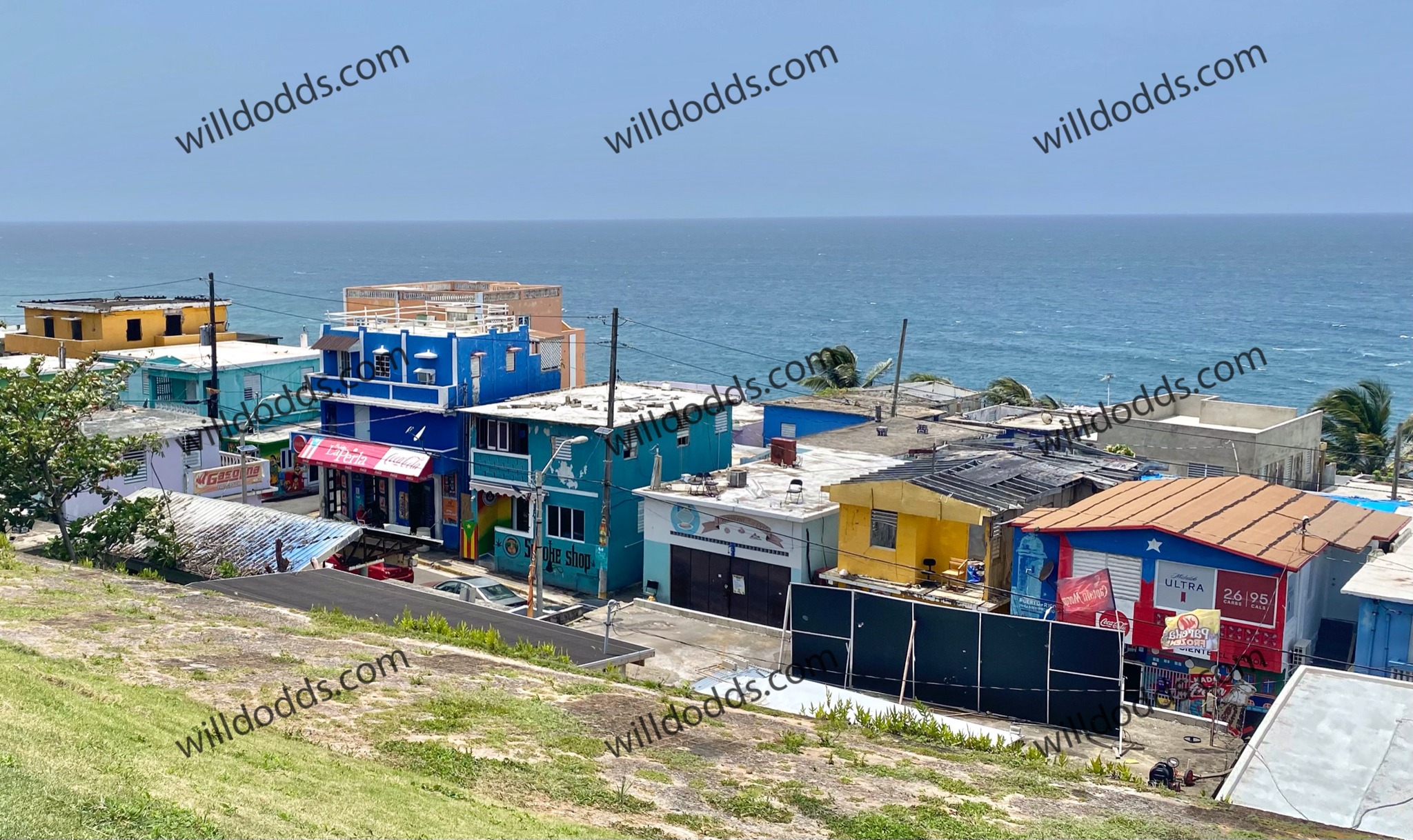
La Cancha Carmelo Anthony
"Cancha" means court, field/pitch, or playing area. The basketball court in La Perla below, which you can see located outside of the city walls, is named for Carmelo Anthony, a famous basketball player who has played many years in the NBA, most notably for the Denver Nuggets and New York Knicks. Anthony was born in Brooklyn, NY, but his father was Puerto Rican and Anthony is proud of this part of his heritage. His foundation refurbished the court in 2010, which is why it is named after him. He also owned Puerto Rico FC, a soccer team that played in the NASL (North American Soccer League), but is now dissolved.
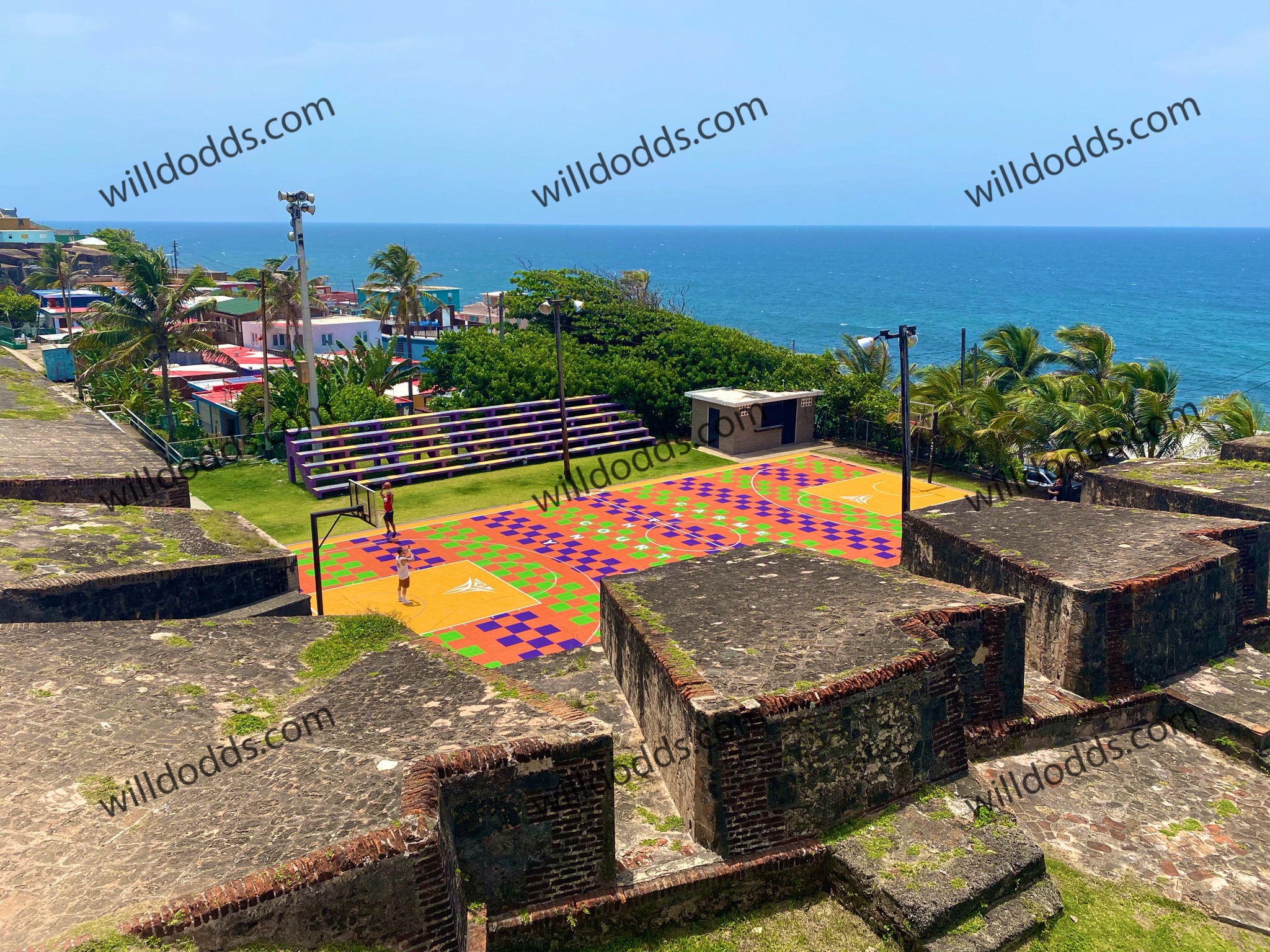
Buenas Noches
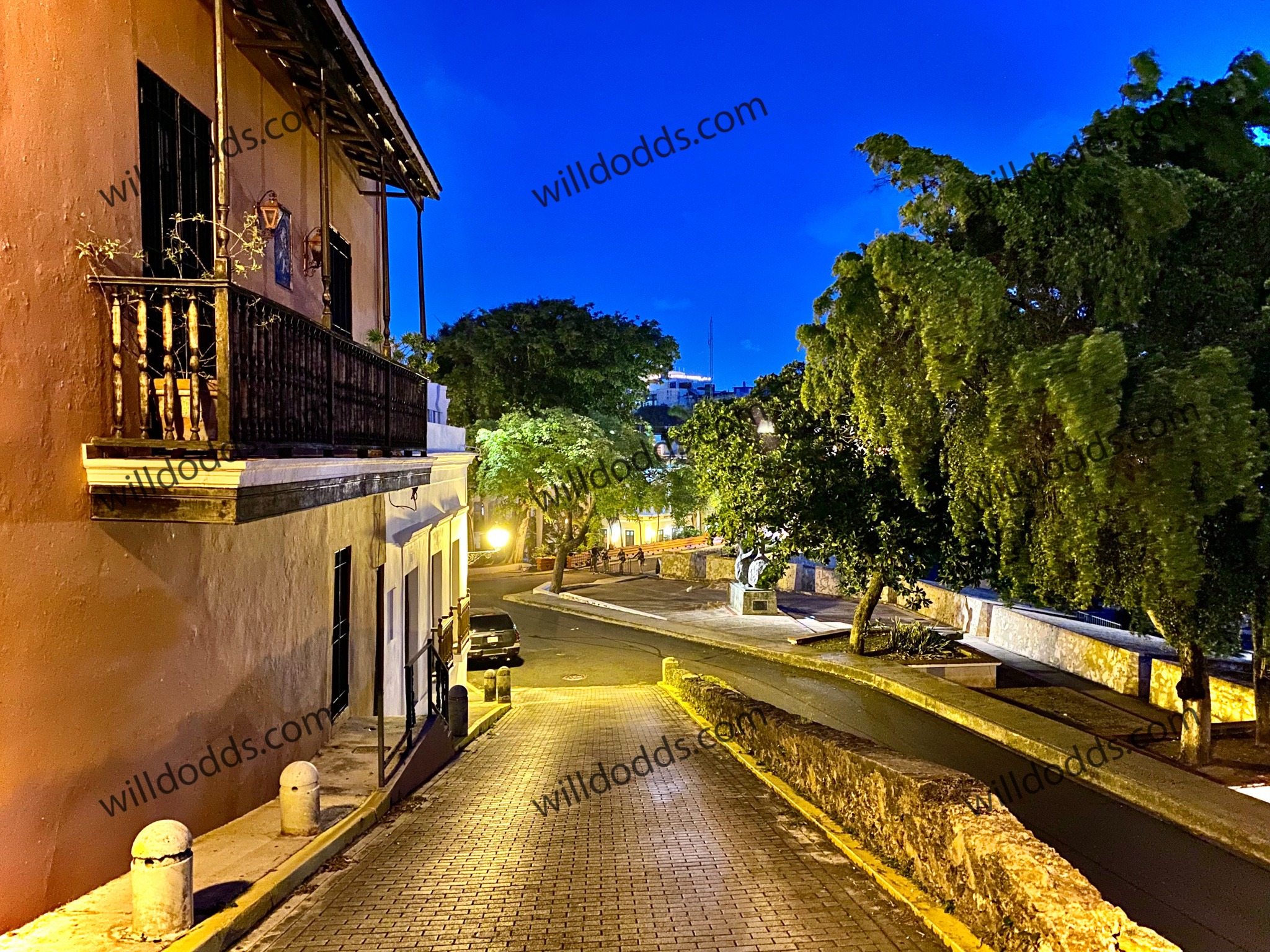
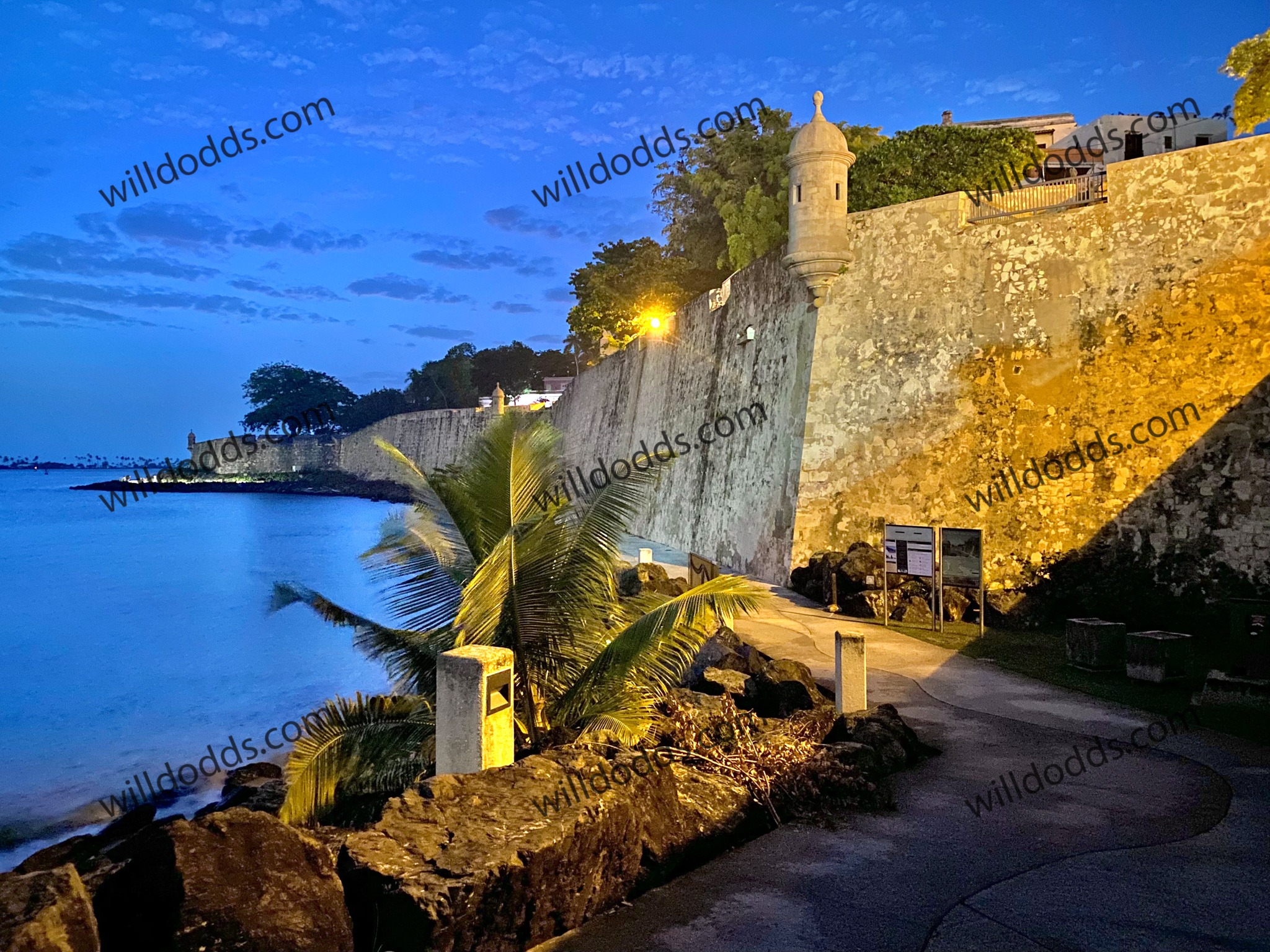
Post a comment